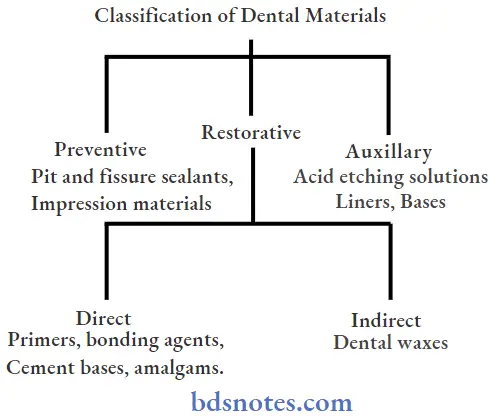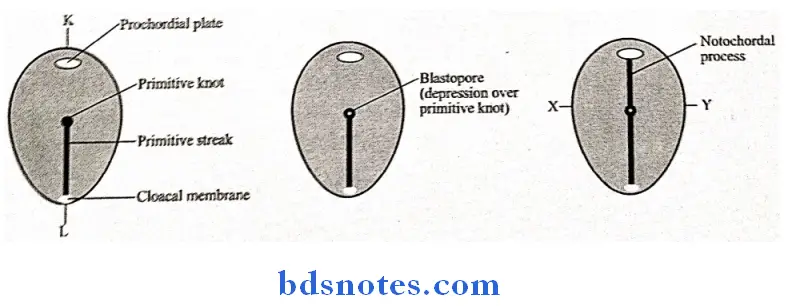Dental Material Introduction
Father of dentistry Pierre Fauchard
Father of modern dentistry GV Black

List of American National Standards Institute/ American Dental Association Specifications dental material, instruments, and equipment
Title:
- Alloy For Dental Amalgam
- Gypsum-Bonded Casting Investment For Dental Gold Alloy
- Dental Impression Compound
- Dental Inlay Casting Wax
- Dental Casting Gold Alloy
- Dental Mercury
- Dental Wrought Gold Wire Alloy
- Dental Zinc Phosphate Cement
- Dental Silicate Cement
- Denture Rubber (Obsolete)
- Dental Agar Impression Material
- Denture Base Polymers
- Denture Cold-Curing Repair Resin
- Dental Material
- Dental Base Metal Casting Alloy
- Synthetic Resin Teeth
- Dental Impression Paste Zinc Oxide – Eugene Type
- Denture Base Temporary Relining Resin
- Dental Alginate Impression Material
- Elastomeric Dental Impression Materials
- Dental Duplicating Material
- Zinc Silica-Phosphate Cement
- Intramural Dental Radiographic Film
- Dental Excavating Burs
- Dental Base plate Wax
- Dental Gypsum Products
- Dental X-Ray Equipment
- Direct Filling Resins
- Endodontic Files and Reamers
- Hand Instruments
- Zinc Oxide-Eugene Restorative Materials
- Exposure Time Designation for Timers of Dental X-Ray Machines
- Orthodontic Wires
- Dental Terminology
- Dental Aspirating Syringes
- High-Speed Air-Driven Handpicks
- Diamond Rotary Instruments
- Dental Abrasive Powders
- Porcelain-Alloy Systems
- Pit and Fissure Sealant
- Dental Implants
- Unalloyed Titanium for Dental Implants.
- Cast cobalt-chromium-molybdenum alloys for dental implants
- Recommended Standard Practices for Biological Evaluation of Dental Materials
- Phosphate-Bonded Investment
- Mechanical Amalgamators
- Dental Electrosurgical Equipment
- Porcelain Teeth
- Dental Chairs
- Dental Units
- Ultraviolet Activators and Disclosing Lights
- Analgesic Equipment
- Casting Machines (Deleted)
- Gas Furnaces (Deleted)
- Uranium Content in Dental Porcelain and Porcelain Teeth
- Crown and Bridge Resins
- Dental Needles
- Dispensers of Mercury And Alloy for Dental Amalgam
- Dental Floss (Deleted)
- Endodontic Filling Materials
- Root Canal Files, Type H (Hedstrom)
- Portable Steam Autoclave Sterilizer
- Jet Injectors (Deleted)
- Zinc Polycarboxylate Cement
- Dental Abrasive Pastes
- Rasps and Barbed Broaches
- Dental Explorers
- Low-Speed Handpicks
- Glass Ionomer Cements
- Ligament Injection Syringes
- Aspirating syringes not operating on the harpoon mechanism
- Dental Ceramics
- Dental X-Ray Protective Aprons and Accessory Devices Root Canal-Filling Condensers and Spreaders
- Endodontic Spreaders
- Dental Absorbent Points
- Dental Stools
- Resilient Denture Liners
- Non-sterile latex Gloves for Dentistry
- Stiffness of Tufted Area of Toot brushes
- Dental Obtruding Points
- Dental Vacuum Pumps
- Color Stability Test Procedure
- Magnets and Keepers Used For Intramural and Extramural Retainers for Prosthetic Restorations
- Combined Reversible/Irreversible Hydrocolloid Impression Materials
- Indicator Pastes
- Panoramic X-Ray Equipment
- Prophy Angles
- Interligament and Perio-Syringes
- Impression Trays
- Impression Alloys
- Dental Operating Lights
- Rubber Dams
Physical Properties Of Dental Materials
Color: Sensation induced from light of varying wavelengths reaching the eye.
Dimensions of color:
- Hue: Dominant color of an object.
- Value: Relative lightness or darkness of a color.
- Chroma: Degree of saturation of a particular hue.
Creep: Time-dependent plastic strain of a material under a static load or constant stress.
Hardness: Resistance of a material to being indented end on scratch.
Metamerism: A phenomenon in which the color of an object under one type of light ap- pears to change when illuminated by a different light source.
Rheology: Study of the deformation and flow characteristics of matter.
Tarnish Process by which a metal surface is dulled or discolored when a reaction with a Sulfide, Oxide, Chloride, or other chemical causes a thin film to form.
Corrosion: Chemical on electrochemical in which a solid usually metal is attacked by an environmental agent resulting in partial or complete dissolution.
Viscosity: Resistance of a fluid to flow.
Embryonic Development Questions and Answers
Question 1. Formation, functions, and fate of notochord.
Answer:
The notochord is a midline structure, that develops between the cranial end of the primitive streak and the caudal end of the prochordal plate.
Notochord Formation:
- The cranial end of the primitive streak becomes thickened to form a primitive knot/node.
- A depression appears in the center of it called a blastopore.
- Cells in the primitive knot multiply and pass cranially up to the caudal margin of the prochordal plate to form a solid cord called the notochordal process.
- After the formation of the blastopore, its cavity extends into the notochordal process and converts it into the notochordal canal.
- Its cells become mixed up with the endodermal cells.
- The notochordal canal is separated from the yolk sac.
- The notochordal canal communicates with the amniotic cavity.
- Gradually the walls of the canal become flattened forming a notochordal plate.
- This process is reversed so that the plate assumes the shape of a tube.
- The proliferation of cells of this tube converts it into a solid rod called a definitive notochord.

Notochord Function:
- Notochord underlies the neural tube.
- It serves as the basis for the axial skeleton.
Notochord Fate:
- Most of the part of the notochord disappears.
- Part of it persists in the region of each intervertebral disc as the nucleus pulposus.

Leave a Reply